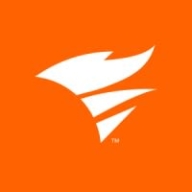

SolarWinds Security Event Manager and Microsoft Sentinel are leading security information and event management solutions with distinct strengths. Based on user reviews and data comparisons, Microsoft Sentinel has the upper hand in features, while SolarWinds excels in pricing and customer support.
Features: SolarWinds is known for its log management, real-time event correlation, and automated threat detection. Microsoft Sentinel stands out with its integration capabilities, advanced analytics, and scalability.
Room for Improvement: SolarWinds users desire better cloud integration and enhanced reporting capabilities. Microsoft Sentinel users seek improvements in alert accuracy and customization options.
Ease of Deployment and Customer Service: SolarWinds benefits from a straightforward deployment process and strong customer support. Microsoft Sentinel has a more complex deployment but offers extensive documentation and support resources.
Pricing and ROI: SolarWinds offers a cost-effective solution with a satisfactory ROI for smaller businesses. Microsoft Sentinel has a higher upfront cost but delivers better long-term ROI due to its advanced features and scalability.
| Product | Market Share (%) |
|---|---|
| Microsoft Sentinel | 6.2% |
| SolarWinds Security Event Manager | 0.7% |
| Other | 93.1% |


| Company Size | Count |
|---|---|
| Small Business | 37 |
| Midsize Enterprise | 20 |
| Large Enterprise | 41 |
| Company Size | Count |
|---|---|
| Small Business | 19 |
| Midsize Enterprise | 3 |
| Large Enterprise | 7 |
Microsoft Sentinel is a scalable, cloud-native, security information event management (SIEM) and security orchestration automated response (SOAR) solution that lets you see and stop threats before they cause harm. Microsoft Sentinel delivers intelligent security analytics and threat intelligence across the enterprise, providing a single solution for alert detection, threat visibility, proactive hunting, and threat response. Eliminate security infrastructure setup and maintenance, and elastically scale to meet your security needs—while reducing IT costs. With Microsoft Sentinel, you can:
- Collect data at cloud scale—across all users, devices, applications, and infrastructure, both on-premises and in multiple clouds
- Detect previously uncovered threats and minimize false positives using analytics and unparalleled threat intelligence from Microsoft
- Investigate threats with AI and hunt suspicious activities at scale, tapping into decades of cybersecurity work at Microsoft
- Respond to incidents rapidly with built-in orchestration and automation of common tasks
To learn more about our solution, ask questions, and share feedback, join our Microsoft Security, Compliance and Identity Community.
When TriGeo was acquired by SolarWinds, TriGeo SIM became known as SolarWinds Log & Event Manager. This product is a leading Security Information and Event Management (SIEM) product and log management solution, which provides log collection, analysis, and real-time correlation.
We monitor all Security Information and Event Management (SIEM) reviews to prevent fraudulent reviews and keep review quality high. We do not post reviews by company employees or direct competitors. We validate each review for authenticity via cross-reference with LinkedIn, and personal follow-up with the reviewer when necessary.